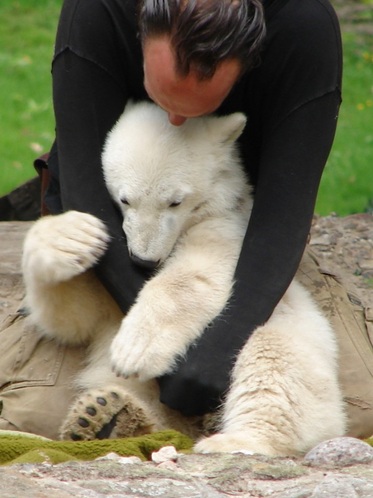
-Oscar Wilde, “The Picture of Dorian Gray.”
Beauty is something society has always had a bit of a fetish with. Snow White and Sleeping Beauty had small forest creatures following them around, birds sang to them. Cinderella befriended a mischief of mice that aided her fairy godmother in preparing perfect ball attire just when she had lost all hope. Being beautiful on the inside and was always rewarded with beauty on the outside, whilst authors and illustrators cruelly bestowed warts and large crooked noses on the more wicked of characters. If only there were such clear signs in real life. Fairytales were, however, not the only ones to translate physical attributes from character. “The Picture of Dorian Gray” by the famous, and perhaps my favourite-ever writer, Oscar Wilde imparted the same, although slightly more shocking, portrayal of how people wear their deeds. A painter captured Dorian’s soul in a portrait, which depicted his angelic features. The corruption of Dorian’s soul was detailed in the portrait and the darker his deeds became the more grotesque his depiction grew, his own face however remained flawless. Of course he hid the portrait.
The shades of grey, (no reference to the literary abomination that has been stealing places in the top charts from perfectly good books, (more of a reference to Eagle Eye Cherry’s song, Shades of Grey,)) creep in as we grow up. We are then taught that beauty has various faces and that, thank you Aesop’s fables, beauty is in the eye of the beholder. There is however one problem with all of this, sometimes the truth, is in fact quite ugly, in which case there are fewer people who want to behold it. The latest development is that people have cottoned onto this fact and figure that if they can dress it up and give it a bit of a make-over the truth may get a better reception.
The EU has its fashion capitals but they are now going beyond dressing up people and taking their fashionista efforts towards climate change in the campaign: “A world you like, with a climate you like.” Connie Hedegaard, the European Commissioner for Climate Action, launched this campaign, with the goal of showing how climate mitigation can result in both tangible economic benefits and improve a general quality of life (http://iciscenter.org/a-world-you-like-with-a-climate-you-like/). A central feature will be a website which will showcase low-carbon success stories until the end of 2013 with the aims of generating better traction in achieving the greenhouse gas emission reductions for the EU of 20% by 2020 and 80-95% by 2050. A positive spin a day keeps the gloom doctor away? It looks like that is what they are trying to do. Does this mean we can move away from talking about talking and discuss the solutions we are trying out?
“We have a choice: We can ACT on our knowledge about climate change. Or we can sit idly by and watch as things get worse. Both options come with a price tag. So why not create a world we like, with a climate we like- while we still have time? With this campaign we want to focus the debate on the solutions and find out what is holding us back from applying them.” – Connie Hedegard ((http://iciscenter.org/a-world-you-like-with-a-climate-you-like/)
There are some mixed reviews about the EU becoming a fairy godmother for climate change, particularly with regards to whether such magic will stick or if all will turn back to pumpkins on the midnight hour. While the devil will be in the details I would argue that the EU might be onto something by pursuing this strategy. It could be something for other countries to consider as a supplement to the CO2 emission reduction targets currently being driven by international pressure and perhaps some trepidation about the worst effects of climate change. Let’s not forget the desire to avoid this all together.
Enter, climate change. As it is the facts aren’t so pretty and it’s understandable that no one wants to gaze longingly into its eyes. In fact if you can avert your eyes and pretend it’s not there you may feel better for it. That does, however, come with a price, starting at guilt, and consequently looking a polar bear in the eyes has never been more difficult. There is a growing consensus, that while climate change is natural, it is our deeds, which are speeding it up. The Intergovernmental Panel on Climate Change found the following claims likely (bearing in mind that the inability to disprove is the closest thing to undeniable proof that we can have in science):
i) “There has been a substantial anthropogenic contribution to surface temperature increases in every continent except Antarctica since the middle of the 20th century.
ii) “Temperature extremes have changed due to anthropogenic forcing.”
ii) “Tropospheric warming is detectable and attributable to anthropogenic forcing (latter half of the 20th century.)
And with a greater than 95% likely “Warming during the past half century cannot be explained without external radiative forcing.” In a nutshell there was anthropogenic change detected in the surface temperature with high significance levels and a less than 1% error probability. (http://www.ipcc.ch/publications_and_data/ar4/wg1/en/ch9s9-7.html)
This is more than a clue, I think it’s safe (beyond a reasonable doubt) to say that it was Colonel Mustard and Miss Scarlett in the drawing room with far too much greenhouse gas emissions. As for the casualties, well we’ve heard it all numerous times. A brief recap of the icecap situation: there is pervading shock of the rapid rate of the Arctic melt and this year’s record low of 24% sea-ice coverage is a five percent drop from the previous record low in 2007. (http://www.nytimes.com/2012/09/20/science/earth/arctic-sea-ice-stops-melting-but-new-record-low-is-set.html?_r=0). Add that to list, on which we also have stressed out polar bears, volatile weather, global warming, sea-level rise, ocean acidification and a grave implications for the future of food security. Our deeds are not looking so pretty right now. An ugly truth, I know, and Never-Never Land with Peter Pan seems like it could be infinitely more fun. The EU is committing to staying away from Never-Never Land but what would ordinary citizens like to do? It seems unclear in the US where climate change hasn’t featured nearly enough on the presidential debates, instead we are joking about “a binder full of women.” (http://thecaucus.blogs.nytimes.com/2012/10/17/binders-full-of-women-now-has-a-binder-full-of-jokes/).
The truth is out there but people don’t really want to read the news, especially if it’s all doom and gloom. Joking about “a binder full of women” does seem far more fun. Approximately 84% of Americans find the news depressing, according to “Inside Reporting,” Tim Harrower, pg. 16 (2007). Unfortunately if that means they don’t get to read the news they may have missed out on “A world you like. With a climate you like.” Talking about solutions may be less depressing and in addition to proving that the climate change problem is not that insurmountable it might just mean we actually get to see the results. Everyone can do something if they choose not to look away. It all adds up, but this is not a climate-specific phenomenon, it appears to be part of a larger part of the human psyche.
It seems to me the same attitude we have to inequality, we see people homeless on the street and a look comes over our eyes, a kind of self-conscious, embarrassed expression that is just casual enough that we can get away with ignoring what we see. School, Afrikaans class to be exact, introduced me to the best description I have heard yet, of this look- the look that looks away, the one reserved for beggars, overzealous vendors and prostitutes. “Ek wou verbymik met die selfbewuste ongeërgde blik, wat ons vir bedelaars en pendelaars en hoere reserveer .” – Die Straatkind, by Linda Roos. That line is probably the only thing I remember from Afrikaans class, other than the rather vivid image of my Afrikaans teacher’s routine performance where he would jump on a desk in a pretend fit of rage and in a brief pause before hurling a dictionary or duster at an unsuspecting wall or desk, would scream at the class: “what did the baboon teach you!?” I’m still convinced drama was his calling, but I digress.
A real life example? San Francisco has its fair share of homeless people, something I was surprised to find when I moved out here, for such a progressive society one would have thought it would have been sorted out by now. But, in spite of the city spending approximately $200 million a year on trying to sort out the ‘homeless problem,’ journalists fear it is only getting worse (http://www.sfgate.com/homeless/). There are however positive programs seeking solutions. There is a man who sits day in and day out at a bus stop a few blocks from where I live. He laughs regularly tends to greet people with a customary ‘budda-bing!’ I still have no idea what that means but as he says it you can see the precariously place strip of tinfoil over his front teeth and a face lightly creased with lines from smiling and a beard speckled with grey. He is a kind man, his name is Jasper and he sells the San Francisco ‘Street Sheet,’ (http://streetsheetsf.wordpress.com/vendor-program/). You contribute what you would like and in return you are handed a newspaper. Jasper is perhaps the most loved person I have ever seen consistently occupy a bus-stop, he seems to know everyone, or at least he makes you feel that he does. I don’t know where Jasper goes when it’s dark but there is a different man who takes the night-shift for occupying the bus-stop, and Jasper’s surly replacement cares little for dialogue and his only interactions with people, which I have witnessed, consists of introducing you to a cup, the assumption is that he would like you to put money in it, but I’ve never actually heard him say those words. The conversation you would normally have with Jasper doesn’t feature with the stranger, and I’m willing to bet he hasn’t benefitted from the bus stop as much as Jasper has. I’m sure this is going to sound frightfully insensitive but there is something about helping someone who is happy about you helping them that makes you feel good and want to do it again. Who said helping people doesn’t have a selfish element. When you feel good about doing something you’re going to want to do it again, that’s the bottom line. It’s a no brainer there, but the big question is then why do we so seldom apply this approach to policy? People tend to want to put off the dentist after all but if you have a nice dentist, it’s not so bad. I’d be willing to bet that Joe Biden has a great dentist.
Dress it up, dress it down, make a world you’d like to live in, hug a polar bear or be practical and look at the policy in your area. The companies that make things cool, the ones that people like, are the ones that are making an impact. This is exactly the kind of thing the EU policy is addressing, they are trying to engage key players to do exactly that. Welcome the cool-factor, may it lead to a cooler climate. There are examples of this in the USA although policy hasn’t exactly followed the same trajectory. Opower for example has increased energy efficiency and reports savings of at least 1.5 TWH through its reporting system and has helped consumers save more than a $170million in utility bills in the last 5 years (http://opower.com/company/news-press/press_releases/62). They also do it with a stylish interface that makes it fun, easy and you get to save money, while saving the environment. As far as concepts go it’s a win, win. It’s also apparently hard not to quote Covey’s “The Seven Habits of Highly Effective People.” Change makers in the business world are employing these tactics, just look at how Google made information accessible and easy, it’s almost fun looking things up. Perhaps it is time policy makers employ these tactics and highlight all the good stuff (beyond trying to win an election). After all, “I’ve learned that people will forget what you said, people will forget what you did, but people will never forget how you made them feel.” – Maya Angelou.
Clearly not all other bloggers are convinced of the merits of this strategy. For example the k2p blog writes this campaign off as stupidity:
“The sun will continue on its merry way and our climate will perforce follow willy-nilly, even if our politicians and bureaucrats and so-called climate scientists think that modern day “rain dances” will give them climate control.” (http://ktwop.wordpress.com/2012/10/09/climate-control-no-less-a-world-you-like-with-the-climate-you-like/) But then let me ask you this, an exercise in rebranding may get more people to pay attention, especially if we finally get to discuss solution. People have a tendency to be attracted to shiny things and clearly the business as usual approach isn’t getting us anywhere. I’m all for “A world you like. With a climate you like.” Especially if it means I can swap the theme song for the flying monkeys in the wizard of OZ for Louis Armstrong’s ‘wonderful world.’
It is a beautiful thing if we can find a way to make the future a prettier one and want to behold the truth, even if we have to put a bit of makeup on its face. Finding the beauty in doing that, in making the future better, would by Oscar Wilde’s account be a sign of being cultivated, and for those he thought there was hope. Hopefully we will not see it all dressed up with nowhere to go but a positive attitude always has grounds for merit. At the very least they say a positive attitude may not make all of your problems go away but it will annoy enough people to make it worth the effort.
If the idea of being able to guiltlessly look the polar bears in the eyes isn’t quite enough for you and you still need a dose of feel good might I prescribe having a look at the EU success stories. It may make you feel good to know how Bulgaria made electric cars more accessible, how Hungary is building sustainable food production systems by combining aquaculture and hydroponics. And if you’re feeling a little warm and fuzzy after that you could be useful in Sweden where they are using natural body heat for buildings. All available on: http://world-you-like.europa.eu/en/ ).
I don’t know about you but that is the kind of beautiful I like to see.


 RSS Feed
RSS Feed
